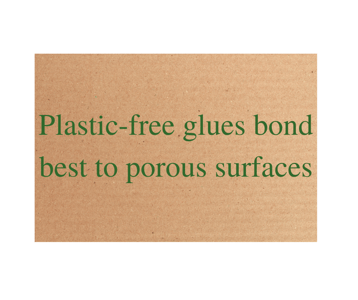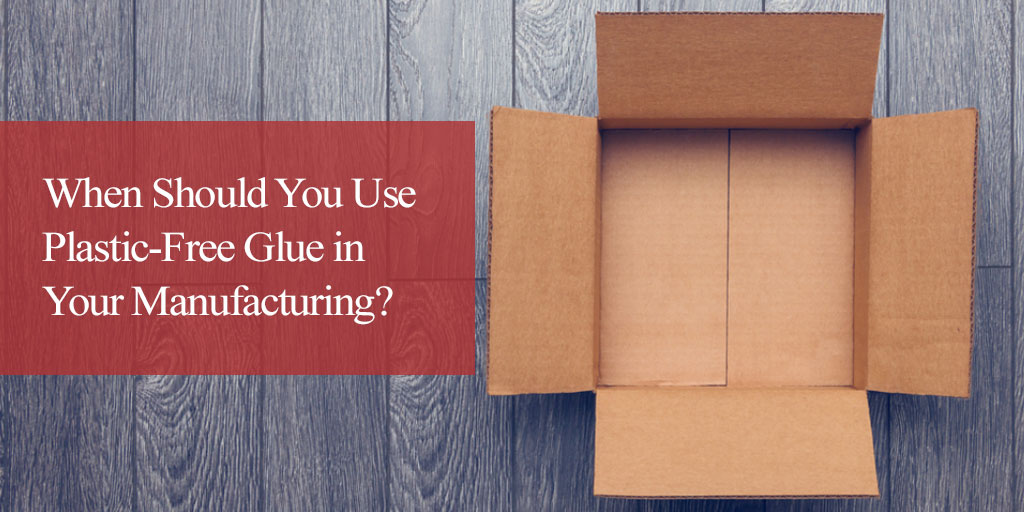More companies are seeking to find greener alternatives in their manufacturing methods, and many are curious about the capabilities of plastic-free glues.
All components, including the glue that holds it together, need to be considered when creating a more sustainable product. Plastic-free adhesives offer an excellent alternative but may not suit every manufacturing method.
When to Use Plastic-Free Glue

Before attempting to glue something together, it’s essential to understand what kind of adhesives can accomplish the job.
Glues are designed with specific uses and won’t work well on all surfaces. Even for eco-minded consumers, an adhesive’s functionality is determined not just by its raw materials but how well it bonds to a substrate for a particular application.
Plastic-free glues bond best to porous surfaces.
For this type of glue to adhere to objects together, it has to be able to permeate the surface. Plastic-free adhesives like gelatin glue work well with paper, cardboard, cardstock, and wood.
Gelatin Glue
Gelatin-based animal glues are a gelled solid at ambient temperature and must be heated to liquefy for use. The glue is created from collagen, sugar, Epson slate, water, and glycerine.
These types of glues are most frequently for application such as,
- Bookbinding
- Packaging
- Rigid Box Manufacturing
- Laminating
- Labeling
Do Plastic-Free Glues Work with Metal, Plastic, or Glass Surfaces?
No. Not all adhesives are suitable for bonding plastic, metal, or glass. Adhesives gelatin glue would not work well on these surfaces. While gelatin glue was used to etch glass signage in the past, it cannot bond two surfaces together.
Tube-based epoxies and two-part epoxy putties are more suitable for stick metal or plastic. These adhesives are effective but usually not eco-friendly as most contain crude oil byproducts.
Some manufacturers are turning to hard plaster and concrete for resin substitutes in some applications, like casting. Researchers from the University of Warwick are looking into Thermoset adhesives using bio-based resins derived from vegetable oil as a possible alternative.
What Surfaces Work Best with Plastic-Free Glue
As mentioned above, plastic-free glues work best with porous surfaces. These include but are not limited to:
- Paper to coated or non-coated paper
- Paper to board
- Board to SBS board
- Wood
To learn more about when to use plastic-free glues in manufacturing, explore how to choose the right adhesive for your application. If you have questions about using more plastic-free achieve alternatives, our experts can help.







